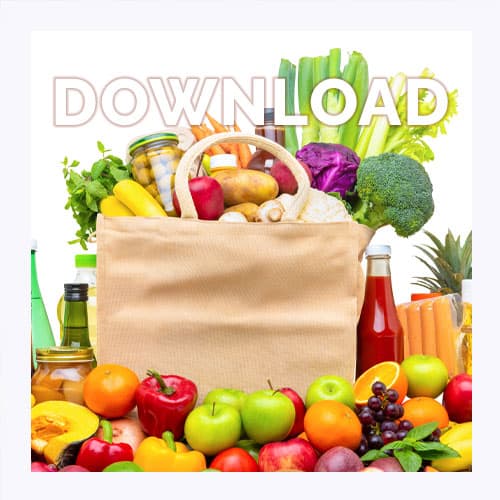A clogged boat drain is no fun anywhere. Two big causes are cooking grease (for galley sink clogs) and congealed soap (for head sinks and showers). And hair can mix with either one to make the situation even worse.
So how do you handle this annoying problem? Well, the first step is to keep drains running clear to begin with.
Avoiding a Clogged Boat Drain
Three things to do that will considerably lessen the chances of having a clog:
- Once a week, pour a pot of boiling water down each drain to melt away anything that might have congealed. It doesn’t have to be fresh water. And draining cooking water from things like pasta or eggs counts, too!
- Use liquid soap in the head instead of bar soap. Bar soap tends to congeal to a harder consistency.
- Vacuum the boat daily to keep hair from both people and pets out of the drains. For those wondering, the Dyson handheld (Amazon) is my favorite boat vacuum. It’s expensive initially but lowest annual cost based on how long they last compared to other brands.
6 Methods to Clear a Clogged Boat Drain
Assuming that the drain has worked well in the past and there’s not an “engineering” problem such as a too-small hose, here are eight methods of clearing a clogged boat drain, from easiest to most complex.
Check the Seacock
Assuming that the seacock for the boat drain is in the bottom of a locker, it’s possible that something fell against it and partially closed it. Unlikely, yes, but possible. And you’d feel really silly if you hadn’t checked the seacock first — it’ll only take a minute or so. With most valves, when the handle is in line with the hose, it’s fully open. And while you’re at it, work the seacock some — it’s a good maintenance precaution so it doesn’t freeze in one position, and maybe the blockage was right in the valve and this will dislodge it.
Hot Water
Grease and soap are the most likely culprits for a slow drain. Hot water will dissolve either one. Boil a teakettle full of water, and pour it down all at once — don’t trickle it in. You should see improvement after one pan, although it may take two or three to fully restore the flow. If it doesn’t, you’ll have to try the next step.
Zip-It Tool
A Zip-It (Amazon) is a cheap little plastic device with barbs that you can shove into a drain and pull back out, removing wads of hair and other nasties. I find it particularly useful for cockpit, shower and head sink drains. Read more about it here.
Plunger
If you have a plunger on board, try it first. Note that a plunger won’t work unless the basin is full of water — air will just compress and you won’t create any pressure to dislodge a blockage.
Baking Soda and Vinegar
Pour 1/2 cup or more of baking soda down the drain, then add 1 cup of vinegar — cider vinegar works best as it has the highest acidic content. It’s a simple, mild acid-base combination that will foam and expand and work its way through a lot of clogs.
For even better results, if you have a drain plug or stopper (even a rag is better than nothing), immediately put it in the drain hole and hold it in place so that the soda and vinegar mix expands down the hose and not just up into the sink. Let it sit 10 to 15 minutes, then pour another pan of hot water down.
Drain Cleaner
Products like Drano are out since they’ll go straight into the water. But you can try an environmentally friendly drain cleaner designed for use on boats: my favorite is Super Digest-It (link is to my article on it). You can buy Super Digest-It on Amazon.
Clear the Thru-Hull
If the above hasn’t cleared the problem, the next step is to clear the thru-hull. And that means going overboard with a mask, snorkel and large screwdriver. I like to wear a pair of old jersey gloves to protect my hands, too. Basically, you need to carefully stick the screwdriver into the thru-hull and scrape out any barnacles or other things that may be lodged in there.
Check the Hose
When all else fails, you’re going to have to remove the hose, check for blockages and if you can’t remove them, replace the hoses. Be sure to close the seacock before beginning the work! A wire coat hanger or piece of 1/4″ dowel can work wonders for clearing blockages.
Bonus Tip from Fellow Cruisers
Finally, I’ve seen the following bonus idea to clear a clogged boat drain from several cruisers. But I have never tried it myself. It’s to use the a small pump–perhaps one for inflating a dinghy–to blow the blockage out.
As I said, I have no personal experience. But it’s unlikely to hurt. And it might work for your clog.
Here’s hoping that you never have to use this information, and that if you do, the problem is quickly solved!
Read Next
Flatten the learning curve with practical how-to info that gives you the confidence to step into life aboard.
Start Learning Today

Carolyn Shearlock has lived aboard full-time for 17 years, splitting her time between a Tayana 37 monohull and a Gemini 105 catamaran. She’s cruised over 14,000 miles, from Pacific Mexico and Central America to Florida and the Bahamas, gaining firsthand experience with the joys and challenges of life on the water.
Through The Boat Galley, Carolyn has helped thousands of people explore, prepare for, and enjoy life afloat. She shares her expertise as an instructor at Cruisers University, in leading boating publications, and through her bestselling book, The Boat Galley Cookbook. She is passionate about helping others embark on their liveaboard journey—making life on the water simpler, safer, and more enjoyable.










The Boat Galley says
Had never heard of trying that. But it would mean that my beer might get warm :/
The Boat Galley says
I actually mention that in the post and they’ve done a couple of giveaways here 🙂 Good stuff!
The Boat Galley says
Oh no!
The Boat Galley says
True, but sometimes things happen either by accident or guest. 🙂
Carolyn Shearlock says
There is most likely something in the pipe. I’d try the Zip-It — it works really well.
The Boat Galley says
Oh yeah. There are always little surprises.
The Boat Galley says
That can work too!
Carolyn Shearlock says
So happy to hear that it worked! Yes, different clogs take different solutions and if one doesn’t work, trying another!
Keith McLean says
I will use my wash down pump hose to push water through the drain. I drilled a rubber sink plug to fit over the hose nozzle and shoot a jet down the drain. It’s worked great so far
Kelly R says
Thank you for sharing this! I want to add how important it is to follow the proportions given in the article and use 1 cup of vinegar for 1/2 cup of baking soda. You can use more, but don’t use less vinegar. Otherwise, the reaction can create a mushy, sludgy mess. And follow up with a good amount of hot water – that’s super important too. I’ve had so many people tell me their drains actually got slower after trying this because they didn’t use enough vinegar or water. This method works well, but only when used correctly.